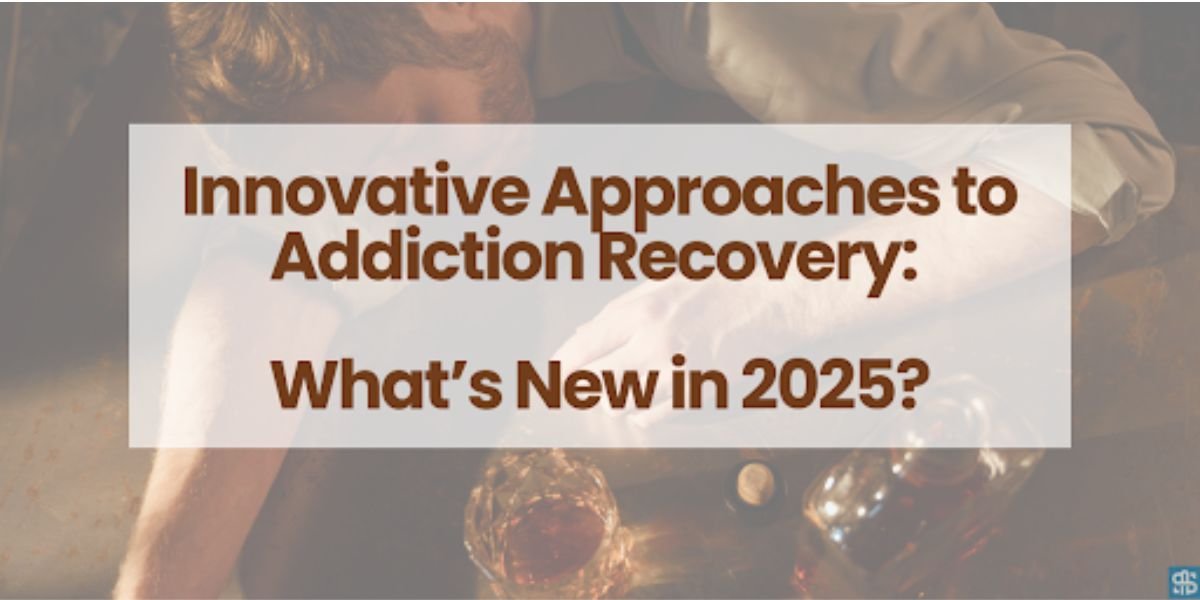Introduction
2025 is here. Medical and technological advancements are still leading conversations. However, what does this mean for addiction treatment and recovery? Addiction treatment is ever-evolving, and recovery emphasizes innovative, evidence-based, and empathetic practices.
In this article, we seek to bring to you keen insights on these substance abuse treatment innovations and what they can mean for recovery from addiction.
Emerging Trends in Addiction Recovery
Substance abuse treatment trends have changed and evolved. They are still changing and evolving as we speak. For instance, some time back, it was understood that sheer willpower was enough to recover from addiction. Now, we know differently. Psychotherapy and pharmacological interventions have become the go-to treatment approaches. This is what medical and technological advancements do for recovery.
In 2025, we continue to see a growing trend and need for empathy, cultural understanding, and technology for addiction recovery.
Speaking of technology, let us first understand the exciting and growing role of technology in addiction recovery. Undoubtedly, technology is significantly influencing the future of addiction treatment. And this future looks bright.
Digital and Telehealth Interventions: Digital and telehealth interventions increased during the COVID-19 pandemic times. By breaking the barriers of geographical isolation, commuting challenges, and so on, they provided an alternative to the traditional, in-person treatment.
After five years, there is a growing demand for digital and telehealth interventions. However, the effectiveness lies in tailoring these interventions to personal needs and goals.
Artificial Intelligence and Machine Learning in Recovery: Artificial intelligence (AI) and machine learning have been the talk of the town. It will take time to perfect this technology. However, AI can be used to ascertain who is at risk of addiction even before addiction-related behaviors have begun. For instance, AI can identify these risk factors by looking at a person’s lifestyle, medical history, social media activity, and so on.
Moreover, AI can also aid in crafting personalized treatment plans for addiction recovery by taking client-specific information, like genetics, medical history, and behaviors, into consideration.
AI has been used to access virtual therapy and has great potential in research. AI is highly useful in collecting, storing, and analyzing large data. This is crucial to determining patterns like factors leading to relapse, outcomes of treatment, and so on. Using AI in research will be useful in bettering preventive care and existing treatment methods.
Before we get carried away, a word of caution. In integrating AI, we must not forget the importance of human touch or connection. One of the central factors to recovery is social support, and AI cannot replicate real interactions with the therapist or peers.
Wearable Devices: Wearable technology and devices can be used to monitor biometric information. When they are combined with other applications (apps), they can detect emergency circumstances and life-threatening conditions, like overdose.
Medical Advancements
Medical advancements have led to medical interventions becoming a staple in addiction treatment and recovery. For instance, medication-assisted treatment (MAT) is specifically useful in the treatment of alcohol use and opioid use disorders. Medical advancements have us looking forward to other innovations on the horizon.
Novel Pharmacological Interventions: Novel pharmacological interventions like the use of naloxone and flumazenil are being considered as life-saving medications for opioid overdose. They can be administered by anybody and can be life-saving.
Moreover, central to the ongoing opioid crisis is the synthetic opioid—fentanyl. New trials of a U.S. fentanyl vaccine are underway. If these trials prove to be successful, they can reduce the euphoric effects of fentanyl and other dangerous effects of the opioid. This will go a long way in curbing fentanyl use and related fatalities.
Genetic and Biomarker Research: Genetic and biomarker research on addiction can be crucial in identifying the biological markers (biomarkers) of addiction to understand how genetics can contribute to addiction. This can be useful in enhancing preventive and personalized treatment programs.

Psychosocial and Behavioral Innovations
Psychosocial and behavioral treatments are the cornerstone of addiction recovery. Even in the light of medical and technological advancements, psychosocial and behavioral innovations are still the ones to watch out for in 2025.
Holistic and Complementary Therapies: Combining holistic and complementary therapies is an integrated, comprehensive approach to addiction treatment and recovery. This kind of wholesome intervention contributes to lasting recovery and sobriety. For instance, cognitive behavioral therapy (CBT) or dialectical behavior therapy can be combined with complementary approaches like mindfulness-based relapse prevention. A great example of this personalized approach can be found at Carrara Luxury Rehab Center Malibu, where tailored treatment plans incorporate evidence-based therapies alongside holistic healing methods to support each client’s unique recovery journey.
Peer-Support Networks: Increasingly, addiction treatment has begun to recognize the importance of peer support in addiction recovery and sobriety. They provide motivation and connectedness. They also promote responsibility for one’s recovery.
Trauma-Informed Care: Trauma-informed care interventions seek to address the long-lasting effects of trauma on a person. They can be used in addiction care and recovery. Those with past trauma can benefit from trauma-informed care, especially as addiction is one of the things that trauma can lead to. This is even more so the case with veterans.
Final Reflections
Medical and technological advancements are reshaping addiction treatment. From telehealth, AI, and wearable devices to new pharmacological innovations, the future of addiction treatments looks bright. Nevertheless, psychosocial and behavioral interventions still remain the cornerstone of addiction treatment, and they are not without innovations either.
As we step into 2025, these trends in addiction treatment will play a crucial role in supporting clients, families, and communities. Not to forget, they are also central to the efficiency of the healthcare system. The focus remains to be on integrating the human touch and technology.
Read more:
Rebuilding Your Foundation: Beginning Anew After Addiction
The benefits of using the best Kratom for anxiety management















